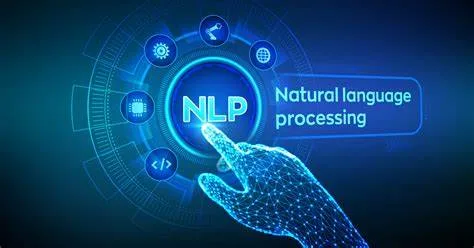Exploring the Wonders of Natural Language Processing

Introduction:
– Briefly introduce the concept of Natural Language Processing (NLP).
– Highlight the importance of Natural Language Processing in today’s technological landscape.
– Mention the various applications of Natural Language Processing in daily life.
1. What is Natural Language Processing?
– Define Natural Language Processing and its role in enabling machines to understand and process human language.
– Discuss the challenges of Natural Language Processing, including ambiguity, context, and linguistic nuances.
– Elaborate on the concept of Natural Language Processing tasks, such as text classification, sentiment analysis, language translation, and speech recognition.
– Discuss the importance of Natural Language Processing in bridging the gap between human communication and machine understanding.
2. Historical Evolution of NLP:
– Trace the evolution of Natural Language Processing from its early beginnings to modern advancements.
– Highlight key milestones and breakthroughs that have shaped the field.
– Dive deeper into significant milestones, like the development of early rule-based systems and statistical approaches.
– Highlight breakthroughs like IBM’s Watson and the emergence of deep learning-based models.
3. Core Components of NLP:
a. Tokenization and Text Preprocessing:
– Explain the process of tokenization and its significance in breaking down text.
– Discuss the importance of text preprocessing for effective Natural Language Processing tasks.
– Explain various tokenization techniques, such as word-based and subword-based tokenization.
– Discuss the challenges of tokenization in languages with complex morphology.
b. Part-of-Speech Tagging:
– Define part-of-speech tagging and its role in identifying grammatical elements.
– Provide examples of how POS tagging is used in various applications.
– Provide examples of how POS tagging is used in machine translation to preserve grammatical structure.
– Mention the role of POS tagging in information retrieval, such as improving search queries.
c. Named Entity Recognition (NER):
– Describe NER and its application in identifying and classifying entities in text.
– Showcase real-world use cases of NER, such as information extraction and search.
– Discuss different types of named entities (e.g., persons, organizations, locations, dates) and their significance.
– Describe the use of NER in creating knowledge graphs and enhancing information retrieval.
d. Sentiment Analysis:
– Explore the concept of sentiment analysis and its significance in understanding opinions.
– Discuss challenges and techniques in performing sentiment analysis accurately.
– Detail the process of building sentiment analysis models, including feature extraction and training.
– Explain the challenges of sarcasm and context in sentiment analysis, and how researchers address them.
4. Natural Language Processing Techniques and Algorithms:
a. Machine Translation:
– Explain the process of machine translation and its evolution.
– Discuss the role of neural networks and attention mechanisms in modern translation models.
– Elaborate on neural machine translation models like Transformer architecture and their impact on accuracy.
– Discuss challenges in translating idiomatic expressions and maintaining cultural context.
b. Text Generation:
– Describe text generation techniques, including Markov models and recurrent neural networks.
– Highlight recent advancements in text generation, such as GPT-3.
– Explain techniques such as recurrent neural networks (RNNs) and generative adversarial networks (GANs) for text generation.
– Discuss ethical considerations and potential biases in AI-generated text.
c. Speech Recognition:
– Discuss the intersection of NLP and speech recognition technology.
– Explain how deep learning has revolutionized speech recognition systems
– Explore automatic speech recognition (ASR) systems and their applications in transcription and voice assistants.
– Mention the role of end-to-end models in simplifying the ASR pipeline.
5. Practical Applications of Natural Language Processing:
a. Virtual Assistants and Chatbots:
-Explore how NLP powers virtual assistants like Siri, Alexa, and Google Assistant.
– Discuss the challenges of creating conversational AI.
– Highlight advancements like OpenAI’s GPT-3 in creating more conversational and context-aware chatbots.
– Discuss the challenges of maintaining user privacy and data security in chatbot interactions.
b. Information Retrieval:
– Explain how search engines utilize Natural Language Processing to improve search accuracy.
– Discuss the role of Natural Language Processing in document summarization and question answering.
– Detail advancements in semantic search and question-answering systems powered by Natural Language Processing.
– Explain the use of BERT and other contextual embeddings in enhancing search accuracy.
c. Healthcare and Biomedical NLP:
– Highlight the use of Natural Language Processing in analyzing medical records, literature, and clinical data.
– Discuss the potential of Natural Language Processing in accelerating medical research and diagnosis.
– Provide examples of how Natural Language Processing aids in medical coding, disease detection, and drug discovery.
– Discuss challenges in dealing with medical jargon and unstructured clinical notes.
d. Social Media Analysis:
– Showcase how Natural Language Processing is employed in analyzing social media sentiment and trends.
– Discuss ethical considerations and challenges in social media text analysis.
– Elaborate on the process of extracting insights from social media text, such as detecting trends and identifying influencers.
– Mention the ethical considerations in analyzing user-generated content.
Here are some practical applications of Natural Language Processing (NLP) across various industries:

https://healthcareguru.services/?p=510&preview=true
1. Virtual Assistants and Chatbots:
– Virtual assistants like Siri, Alexa, and Google Assistant use Natural Language Processing to understand and respond to user queries, making interactions more natural.
– Customer support chatbots provide instant responses and automate routine tasks, improving user experience.
2. Machine Translation:
– Natural Language Processing powers online translation services, enabling people to communicate across languages.
– Multinational businesses use Natural Language Processing for translating documents, websites, and communications for global audiences.
3. Sentiment Analysis:
– Companies analyze social media posts and customer reviews using sentiment analysis to gauge public opinion and adapt marketing strategies.
– Governments use sentiment analysis to monitor public sentiment on policies and decisions.
4. Information Retrieval:
– Search engines employ Natural Language Processing to understand user queries and retrieve relevant results.
– Question-answering systems provide instant responses to specific queries using NLP techniques.
5. Text Summarization:
– NLP is used to automatically summarize long texts, making it easier to digest large volumes of information.
– News organizations use text summarization to create concise news briefs.
6. Speech Recognition:
– Speech-to-text applications transcribe spoken language into text, aiding in transcription, voice commands, and accessibility tools.
– Voice assistants like Amazon Echo and Apple HomePod rely on NLP for understanding and responding to spoken requests.
7. Named Entity Recognition (NER):
– NER is used in information extraction tasks, such as identifying names of people, organizations, and locations in unstructured text.
– Finance companies use NER to extract information from news articles that might impact stock prices.
8. Language Generation:
– Natural Language Processing models like GPT-3 can generate human-like text, which finds applications in content creation, creative writing, and code generation.
9. Healthcare and Biomedical NLP:
– NLP aids in analyzing electronic health records, medical literature, and clinical notes to extract valuable insights and assist in diagnoses.
– Medical chatbots provide preliminary medical advice and information to users.
10. Legal and Contract Analysis:
– Legal professionals use NLP to review and analyze contracts, extracting key terms and clauses.
– NLP assists in due diligence processes by identifying relevant information from legal documents.
11. Academic Research:
– Researchers analyze vast amounts of text data to discover patterns, trends, and relationships in various fields.
– NLP helps automate the process of literature review and information extraction.
12. Language Teaching and Learning:
– Natural Language Processing-based applications help language learners with grammar correction, vocabulary building, and language proficiency assessment.
– Language learning platforms offer personalized exercises and content recommendations based on user performance.
These are just a few examples of how NLP is applied in different industries to enhance communication, automate tasks, and gain insights from textual data. The field of NLP continues to evolve, opening up new possibilities for innovation and advancement.

Conclusion:
– Summarize the key points discussed in the blog post.
– Emphasize the ever-growing importance of Natural Language Processing in various industries.
– Encourage readers to explore further and stay updated on Natural Language Processing advancements.
– Reflect on the rapid progress of Natural Language Processing and its potential to reshape industries and human-computer interactions.
– Encourage readers to explore online resources, research papers, and courses to delve deeper into Natural Language Processing.
– Emphasize the need for continued research to address challenges and create more inclusive and accurate Natural Language Processing systems.
https://healthcareguru.services/5-features-of-machine-learning-ai/


Great info. Lucky me I came across your site by accident (stumbleupon).
I have saved it for later!
Thank you so much for your feedback